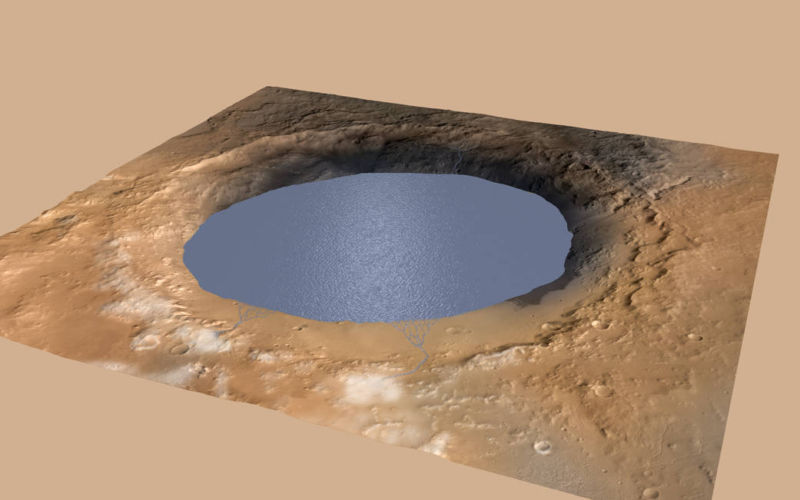Ancient lake sites suggest lots of precipitation on Mars

Enlarge / A simulated view of Gale Crater Lake, measuring about 150km across, on Mars about 3 billion years ago. (credit: NASA/JPL-Caltech/ESA/DLR/FU Berlin/MSSS)
Mars clearly once had a lot of water-there are simply far too many features that clearly formed in a watery environment for that to be a matter of debate. What's less clear is how much of that water was liquid and for how long. While some features clearly indicate that liquid water was present for a long time, others likely formed under glacial ice.
It's not clear whether the differences are a matter of timing-a wet period followed by an icy one, for example-or due to regional differences in Mars' climate. It's difficult to tell in part because we can't get climate models of Mars to produce a climate that's wet enough for long enough to form a lot of watery features.
To try to put some constraints on what the ancient Martian climate might have looked like, a team of planetary scientists decided to take a careful look at some of the once-watery features identified on the surface of the red planet. Timothy Goudge, Caleb Fassett, and Gaia Stucky de Quay (yes, that's a planetary scientist named Gaia) identified a series of lakes, and used the features of the lakes to put some constraints on the precipitation that fed them.
Read 10 remaining paragraphs | Comments